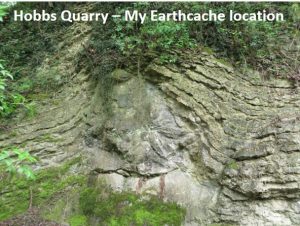During his semi-retirement, John Donato has been using some of his spare time to work with the academic ‘Beneath Britain Group’, formed as a joint initiative between UKOGL (UK Onshore Geophysical Library) and the Department of Earth Sciences at Oxford University. He has recently published a third paper on the Beneath Britain website (Department of Earth Sciences » Beneath Britain (ox.ac.uk)), this time authored jointly with Chris Pullan (CP Exploration).
The first section of the paper describes a gravity-stripping procedure along a series of north-south profiles in southern England and identifies the presence of a large positive residual Gravity Anomaly spanning the western parts of the Wessex Basin. The Anomaly has a large positive amplitude of over 30 mGal and exhibits a linear northwest-southeast trending gradient along its northeasterly margin, extending from the Bristol Channel to beyond the Isle of Wight. This gravity margin has been identified previously (Busby and Smith (2001), Genc (1988)) but with less detail and with no geological explanation proposed. It seems likely that the residual anomaly is related to a significant crustal feature, probably deep-seated, and with the associated northwest-southeast gradient representing an important and fundamental lineament.

The second section of the paper goes on to consider geological changes across the northeasterly edge of the Anomaly. Well data, mainly available via the UKOGL website, demonstrate significant geological differences across the edge. A change in metamorphic grade is seen, with markedly higher grades located over the Anomaly and lower grades to the northeast. In addition, significant changes in the lithologies, facies and stratigraphy of the Upper Paleozoic may be seen. The Upper Paleozoic sequences, including Culm sections penetrated in wells drilled over the Anomaly, appear to be similar to those seen at outcrop in southwest England and are thought to represent their buried easterly extension. They differ markedly from the contemporaneous Lower Carboniferous shallow water shelfal limestones seen within the Mendips to the north and east of the Anomaly.

In conclusion, the northeastern linear margin of the residual Gravity Anomaly is thought to represent a deformation zone linking the fault zones of the Bristol Channel to the fault zones of the English Channel and extending into northern France. The work supports the suggestion of previous authors (Holder and Leveridge (1986), Woodcock et al (2007)) that such a boundary exists and is believed to be a Terrane boundary along which the southwest England structural block was translated dextrally during the Carboniferous. Movement was possibly initiated within Visean-Namurian times with reactivation into the Late Carboniferous. The block may have moved to its current position from an original position at the western end of the Rhenohercynian Zone of continental Europe, with which it has more affinity, a journey of some 400km!

Hopefully, this brief summary provides a little of the flavour of the work. If you have the appetite for more detail, the paper is available at (SW-England-Pullan-and-Donato.pdf (ox.ac.uk)).
John Donato 13/01/2022
References:
Busby, J.P. and Smith, N.J., 2001. The nature of the Variscan basement in southeast England: evidence from integrated potential field modelling. Geological Magazine, Volume 138, pp. 669-685.
Genc, H.T., 1988. Gravity and other geophysical studies of the crust of southern Britain, PhD Thesis. Edinburgh: University of Edinburgh.
Holder, M. and Leveridge, B., 1986. Correlation of the Rhenohercynian Variscides. Journal of the Geological Society, London, Volume 143, pp. 141-147.
Woodcock, N., Soper, N. and Strachan, R., 2007. A Rheic cause for the Acadian deformation in Europe. Journal of the Geological Society, London, Volume 164, pp. 1023-1036.



